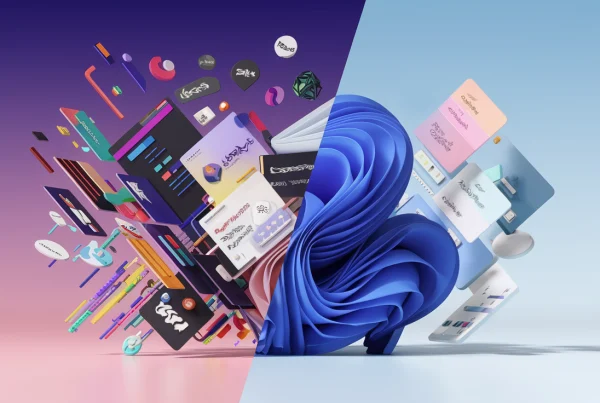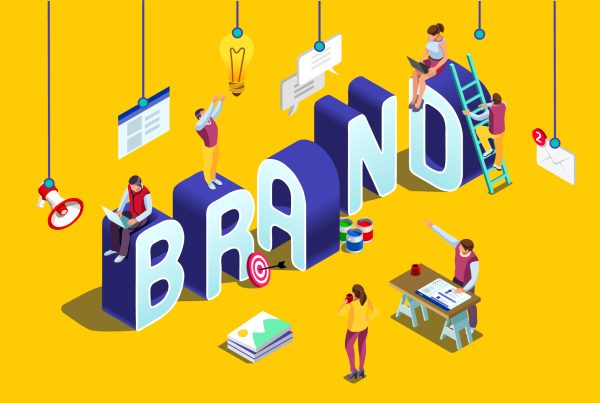In the dynamic realm of product design, fostering collaboration across diverse disciplines is not merely a luxury but a strategic necessity. This article delves into the pivotal role that cross-discipline collaboration plays in elevating the quality and success of product design endeavors.
Chapter 1: Bridging the Gap Between Design and Development
As a seasoned product designer with a background in full-stack development, I understand firsthand the significance of bridging the gap between design and development. The synergy between these two domains not only accelerates the product development lifecycle but also ensures a seamless integration of functionality and aesthetics.
In today’s fast-paced design landscape, the traditional silos between designers and developers are fading. The collaboration between these disciplines is not just a procedural step but a philosophy that reshapes how we conceive, iterate, and deliver products. The magic happens in the convergence of design thinking and coding finesse, where concepts transform into interactive realities. A massive proponent of this convergence is the Agile methodology, when implemented correctly.
Agile methodology stands as a transformative force in modern product design, particularly for multifaceted teams, by prioritizing flexibility, adaptability, and customer satisfaction. The emphasis on smaller shared cycles, known as sprints, fosters continuous collaboration and quicker feedback loops, ensuring alignment among designers, developers, and stakeholders. Agile’s promotion of rapid prototyping accelerates design validation, creating tangible reference points for seamless communication and feedback exchange. Emphasizing “individuals and interactions over processes and tools,” Agile reduces bureaucratic hurdles, enabling direct communication within multifaceted teams and fostering a collaborative spirit that transcends disciplinary boundaries. Additionally, Agile’s flexibility in responding to change aligns well with the dynamic nature of design innovation, empowering teams to adapt swiftly and deliver customer-centric solutions. In essence, Agile methodology serves as a catalyst for collaboration, productivity, and performance improvement, providing multifaceted design teams with the tools to navigate complexity and deliver innovative, high-quality products.
In the landscape of product development, a prevalent issue arises as many teams, despite adopting Agile methodology, often misuse or misinterpret its principles. One common pitfall is the tendency to treat Agile as a set of rigid rules rather than embracing its core values of flexibility and adaptability. Teams may inadvertently prioritize processes and tools over individual interactions, stifling open communication and collaboration. Additionally, the misuse of Agile manifests when teams adhere strictly to initial plans, neglecting the methodology’s emphasis on responding to change. This results in missed opportunities for innovation and fails to address evolving customer needs effectively. To truly harness the potential of Agile, teams must shift from a rule-bound approach to one that embraces its underlying values, fostering a dynamic and collaborative environment that can adapt to the ever-changing demands of product development. As designers, we should be a prevalent driving force behind this change.
In the immortal words of the acclaimed designer, Don Norman:
“The skill of the designer is the ability to see and understand the intersections of disciplines, to comprehend the complex whole.“
Drawing inspiration from Norman’s insight, our collaborative efforts become a dance of creativity and logic, harmonizing the often divergent worlds of design and development. As we traverse this intersection, we discover that the amalgamation of diverse perspectives is not merely a necessity but a catalyst for groundbreaking innovation.
By cultivating a shared understanding between designers and developers, we pave the way for innovation and efficiency. This collaboration transforms the abstract visions of designers into tangible, customer-centric products that resonate with both form and function. The synthesis of creativity and technical prowess ensures that our designs not only captivate the eyes but also seamlessly function in the digital or physical realms they inhabit.
Chapter 2: Leveraging Technical Knowledge for Design Excellence
My journey from a full-stack developer to a product designer has given me a unique advantage – the ability to merge technical expertise with design intuition. This chapter explores how a technical background enhances the design process and results in solutions that are not only visually appealing but also technically robust.
In the intersection of design and technology lies an untapped well of possibilities. Designers armed with technical knowledge can visualize beyond the surface, considering the intricacies of implementation from the outset. This foresight not only streamlines the collaboration with developers but also ensures that our designs are aesthetically pleasing as well as technically feasible.
Echoing that quote from Norman, it’s true that technical understanding is necessary for enabling designers to “comprehend the complex whole”. The ability to recognise and avoid instances where creativity introduces unintended complexity is an under appreciated skill that not only benefits customers but the team as a whole. That’s not to say that creativity always results in complexity. Albert Einstein’s words resonate in the realm of design: “Everything should be made as simple as possible, but not simpler.” Technical acumen empowers designers to simplify complexity without compromising functionality, paving the way for truly exceptional designs.
As we navigate this intersection of design and technology, we find that the union of these disciplines is not a mere collaboration but a dynamic synergy. It is a convergence that doesn’t just meet expectations but surpasses them, giving rise to designs that are not just visually stunning but functionally exquisite.
In the ever-evolving landscape of technology, designers armed with technical knowledge are better equipped to navigate complexities and push the boundaries of what’s possible. The synergy of technical acumen and creative flair leads to product designs that stand the test of functionality and innovation. Our designs aren’t just skin-deep; they embody a harmonious blend of creativity and technical precision, pushing the envelope of what customers can experience.
This doesn’t mean all designers should code, but possessing even a basic technical knowledge can significantly enhance collaboration with developers. Understanding concepts like MVC (Model-View-Controller) architecture or the fundamentals of code frameworks provides designers with valuable insights into the technical underpinnings of their designs. Moreover, awareness of how components are constructed as separate modular pieces enables more effective communication between designers and developers. This shared understanding fosters a collaborative environment where designers can articulate their visions with a nuanced grasp of implementation considerations, while developers appreciate the design choices with a deeper awareness of their technical implications. Such cross-disciplinary comprehension not only bridges the gap between design and development but also facilitates a more seamless and productive collaboration, ultimately contributing to the success of the entire project.
Chapter 3: Crafting Uplifting User Experiences
Passionate about user experience, I find immense joy in crafting designs that go beyond aesthetics to deliver genuinely uplifting experiences. This chapter delves into the collaborative efforts required to ensure that products resonate with customers on a profound level, leaving a lasting positive impact.
In the heart of every design lies the customer experience, an amalgamation of emotions, interactions, and usability. Achieving excellence in user experience requires a holistic approach, where designers, developers, and other stakeholders converge to understand the customers’ needs and desires. It’s not just about creating visually appealing interfaces but about curating an experience that leaves a lasting impression.
The influential UX designer, Jakob Nielsen, emphasizes the essence of user experience:
“The first requirement for an exemplary user experience is to meet the exact needs of the customer, without fuss or bother.”
Nothing says “without fuss or bother”, quite like MVP. Minimum Viable Product (MVP), often looked at like a curse word in modern product design, is the embodiment of Nielsen’s philosophy, offering enough affordance for the customer to achieve their goals, without the need of excessive flair.
Embracing an MVP first approach is paramount in the realm of product development as it fundamentally aligns with the principles of efficiency, customer-centricity, and rapid iteration. By prioritizing the development of a streamlined, essential version of a product, teams can expedite the time-to-market and garner invaluable customer feedback early in the process. This approach not only minimizes the risk of investing resources in features that might not resonate with customers but also enables swift adjustments based on real-world usage. The MVP strategy fosters a lean and iterative development cycle, allowing teams to refine and enhance the product incrementally, ultimately ensuring that the final offering is not only robust but precisely meets the evolving needs and expectations of its intended audience. In essence, the MVP first approach is a strategic imperative for navigating the complexities of product development, striking a balance between efficiency, customer satisfaction, and continuous improvement.
MVP alone might seem like the enemy of experience but they’re much more connected, especially when frameworks such as design systems are in place.
A design system serves as a shared language for design and development, offering a systematic and cohesive framework that enhances collaboration and accelerates the development process. This shared language streamlines communication between design and development teams, reducing ambiguity and facilitating a more efficient workflow. Designers can create with confidence, knowing that their vision aligns seamlessly with the technical implementation, while developers benefit from a ready-made toolkit that expedites the coding process. The result is not only a harmonious integration of design and development efforts but also the ability to achieve rapid development cycles. Design systems empower teams to iterate swiftly, scale projects efficiently, and maintain a cohesive product experience, ultimately contributing to the agility and success of the development process.
In the intersection of design and user experience lies the power to create products that not only meet customers’ needs but exceed their expectations. Cross-discipline collaboration empowers designers to weave narratives that resonate emotionally, establishing a strong bond between the customer and the product. As we prioritize customer-centric design, we elevate our creations beyond mere artifacts; they become companions in the customer’s journey, leaving an indelible mark on their lives.
Chapter 4: The Art of Meaningful Design
As we traverse the multifaceted landscape of design, it becomes evident that true excellence is not confined to aesthetics or functionality alone. The synthesis of these elements, coupled with a deep understanding of customer needs, gives birth to meaningful design. This chapter explores the profound impact that cross-discipline collaboration has on creating designs that transcend the ordinary.
In the words of Antoine de Saint-Exupéry,
“A designer knows he has achieved perfection not when there is nothing left to add, but when there is nothing left to take away.“
Every collaborative endeavor is a journey toward achieving this perfection. The intricate dance between disciplines results in designs that are not cluttered with unnecessary elements but are distilled to their essence, delivering a user experience that is both seamless and sublime.
Chapter 5: The Sum of All Parts
In the intricate journey of product development, every individual plays a pivotal role in shaping its success. From designers crafting captivating user interfaces to developers implementing seamless functionality, and from marketers communicating value to users to customer support addressing queries, each part contributes to the whole.
Success, in this context, transcends individual achievements; it is the sum of collaborative efforts across departments. Measuring success should extend beyond traditional metrics and embrace a holistic view, considering user satisfaction, market impact, and long-term viability. Establishing the right tracking mechanisms, touch points, and feedback loops is paramount in this process. These elements not only validate initial design assumptions but also lay the foundation for iterative improvement.
Sharing ownership of a product between departments becomes not just a strategy but a cultural ethos, fostering a sense of collective responsibility that propels the product towards enduring success.
In the fast-paced world of product design, collaboration is the cornerstone of success. The fusion of design, development, and many other disciplines not only streamlines the creative process but also results in products that are innovative, functional, and, above all, deeply resonant with the end-customers. As we navigate the intricacies of cross-discipline collaboration, we pave the way for a future where the synergy of diverse skills propels the design industry to new heights.
In the eloquent words of Milton Glaser, “There are three responses to a piece of design – yes, no, and WOW! Wow is the one to aim for.” Through collaborative endeavors that embrace diverse perspectives, we not only aim for the “Wow” but consistently achieve it, leaving an indelible mark on the canvas of design innovation.



